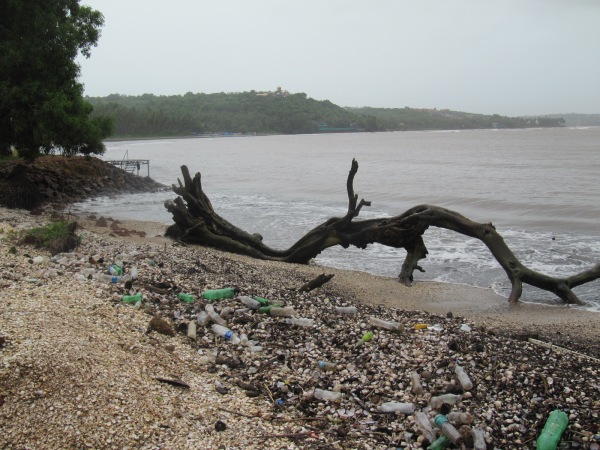Off late there have been doubts about travel as a whole. The tourism industry is at a precarious stage. The oil prices are going up, snatching conventional travel away bit by bit from people at large. The economy of European nations is going through a slump reducing the backpacker tourism in India. But is that such a bad thing? To a property owner at a tourist spot, yes! But for places at large, I think it’s the natural balance being restored.
Though it would be unjust to blame only tourism, we can no longer gloss over its hand in the Uttaranchal tragedy. There has been plethora of reports confirming that the calamity was as much man-made, if not more, as it was natural. The extensive industrialisation and the construction of infrastructure for the ever-growing tourism industry created a stress on the fragile ecology.
Even on a lesser intense level, tourism is becoming a sore point with most. Wherever you travel these days, there are scores of other tourists. It has become classy (read snobbish) to cringe at the crowded places. But we keep forgetting that we too are a part of what you call ‘crowd’. I feel outrageously angry at the plastic strewn beaches or jungle treks. But it is one thing to condemn the non-bio footprints and another to dislike the human presence.
Most of the “travellers” (us included), crave for unknown little havens – a secluded beach, a lesser known and frequented waterfall or maybe, a trek where you need permit. This is to get away from crowd and plastic litter, and also to get closer to unsullied nature. But how long will those places be secluded? The fact that we have reached there, means that others will too. It’s the age of social media and blogs. Besides, we aren’t the God’s chosen ones to have the sole privilege of witnessing such beauty. Why shouldn’t others? Should we keep it a guarded secret, like mom’s recipes?
One would argue that it might be good for the place to be ‘discovered’. This will mean better infrastructure for travellers (and tourists) and more livelihood opportunities for the locals. But the process of decaying of the place starts here. The most visible scar is the plastic. It’s everywhere. Glaring and bold in its non-bio glory. No one thinks twice before throwing a bottle or a wrapper anywhere.
Then there are other, more gradual but very permanent changes. More and more tourists (not travellers, there is a subtle difference here) would expect the comforts they are used to. These people, and they form a major chunk, want to visit their perception of a place and not the place itself. So you see homogenised hospitality and food services combined with standard architecture taking over the local genuineness. Everything local – which was there because it was better for that locale – slowly diminishes and goes away. Only museums preserve it.
The rampant urbanisation and burgeoning construction – of roads and hotels – that follows the ‘discovery’, creates further homogenisation. It has become hard to distinguish the uniqueness of a highly commercialised tourist city from another. And when it gets to extreme you have horrible episodes like Uttarakhand.
So where are the answers?
There are anti-plastic laws in many regions but these laws are like the anti-rape zero-tolerance laws made in the capital – easily made and hardly implemented. It is virtually impossible to keep surveillance; and bribes are given and received with gusto. As with a society safe for women, a plastic free zone can materialise only if people change their habits and psyche.
Does the solution lie in a controlled tourism policy like the one in Lakshadweep? Keeping the number of tourists as well as tourist facilities under check through permit seem like a way out. This preserves the indigenous people and locale, but is detrimental to entrepreneurial creativity, not to forget the bribes that one might have to pay to get a permit to start a business there. And even if we are able to replicate this sustainable tourism model, sans corruption, across India, would we be able to check the numbers? Aren’t there just too many of us? The idea of taking permit for weekend getaway is just ridiculous, or is it?
There are just too many jumbled questions. So maybe, it is not a bad thing that travel, as we know it, is on decline. That the oil prices are making carbon-footprint-inducing travel dearer and dearer. May be, just may be, the solution is travelling the in the way people travelled 1000 years ago – by sailing, on cart(now even cycling) or on foot.
Photos courtesy :
http://www.treehugger.org, http://www.wikipedia.org, http://www.stockpicturesforeveryone.com/2011/08/lavasa-hill-city-near-pune.html and http://bridgetsbikeblog.wordpress.com







nice, honest and critical account, its reassuring to know there are others out there acutely aware of our own impacts as tourists, no matter how sensitive we may try to be. What is the solution… in my case, the higher the oil price goes the better as it will stop folk like me (many of whom love to travel) flying to my favourite country india! (even if while there, I may travel on my bicycle, that does not legitimise it anymore) 😉
LikeLike
I recently read an article “How banning plastic bags helped clean up Rwanda”. Although a major part of it is in the traveler to care for the nature he or she strives for to get rejuvenated and at peace. But these governmental initiatives also go a long way if implemented and enforced. Nice article, just sharing this information 🙂
LikeLike
Thanks for the info Pushkar. It is, indeed, a great move. Although I wonder if scaling it to vastness of India would have same results.
LikeLike